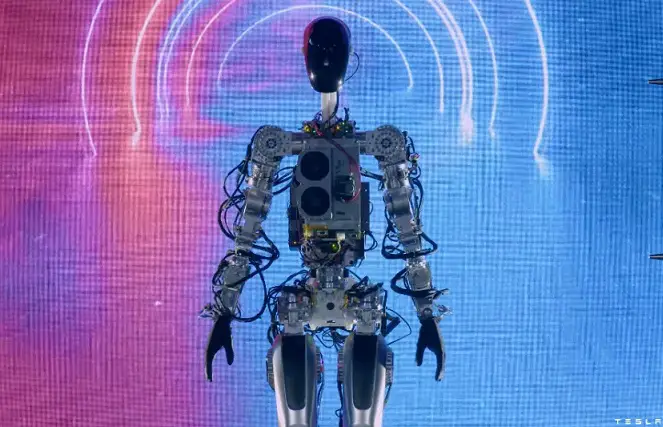Tesla’s Optimus autonomous robot rollout was widely panned by critics after it revealed a basic robot that was seen as primitive compared to the more developed products of companies like industry leader Boston Dynamics. As Boston Dynamics shows its robots doing backflips and complex dance choreographies, Optimus was only able to shuffle slowly, and wave.
However one analyst argues the robot is a huge win for the company, and could offer residual benefits to other products down the line, especially its autonomous driving software.
Oppenheimer’s Tesla analyst Colin Rusch said in an interview, “What we’re excited about is the learning cycles that we’re seeing the company execute on the AI side.” He notes that at some point, were Tesla to license its AI software to other companies, it could easily bring in “a couple of billion” dollars in profits are very high margins. He added, “That’s where I think the real value is.”
Ostensibly, in developing the robot, Tesla is looking to produce a machine capable of performing routine or monotonous tasks which humans do not want to do, or which they cannot be hired to do for a cost effective salary in a tight labor market.
First introduced in August of 2021, the Automaker provided an update on the program at its recent AI day event, in which two versions were presented – an earlier prototype which could walk, as well as a newer prototype which could pick up a package or water plants in an office environment, although this version was unable to walk. It was the first demonstration of the robot performing tasks.
Rusch explained, “The important part is them moving down the road on the technology development. We saw them demonstrate an awful lot of sophisticated sub-system behavior.”
In addition, if developed, the Optimus program could offer the Automaker a device which could lower its operating expenses in its own manufacturing facilities, if it can be made useful and enough could be produced.
However Rusch admits that the robot program is probably not going to affect Tesla’s market valuation in the short term.
Rusch said, “The robots are way down the line. They are talking about three to five years, and they could be much longer than that in terms of when they see that up and running.”


